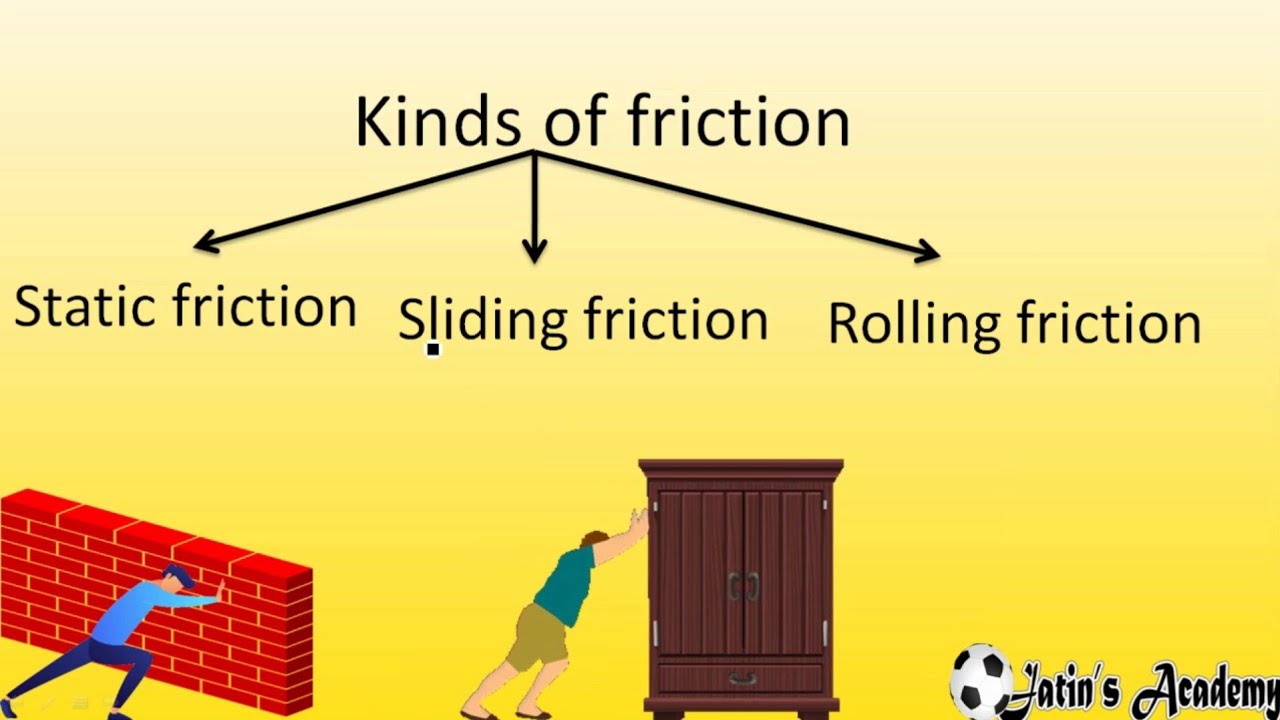
Friction
An introduction to Friction
Name: Own Teacher
Email: info@ownteacher.com
Created At: 01-11-2023
Friction is a force that opposes the relative motion or tendency of motion between two surfaces in contact. It arises due to the interactions between atoms and molecules at the surfaces of objects. Here is a comprehensive explanation of friction:
1. Types of Friction:
- Static Friction: This force prevents the initiation of motion when two surfaces are at rest relative to each other.
- Kinetic Friction: Also known as sliding friction, it opposes the motion of objects that are already moving against each other.
- Rolling Friction: This occurs when one object rolls over another and is typically less than sliding friction.
- Fluid Friction: It applies to objects moving through a fluid, like air or water.
2. Coefficient of Friction:
- The coefficient of friction is a dimensionless number that quantifies the friction between two materials. It depends on the materials in contact and can vary with conditions like temperature and surface finish.
3. Laws of Friction:
- Amontons' Laws: These empirical laws describe the relationship between frictional force, normal force, and the coefficient of friction.
- Coulomb's Law of Friction: This law states that the force of friction is proportional to the normal force and the coefficient of friction.
4. Factors Affecting Friction:
- Surface Roughness: Rougher surfaces create more friction due to increased contact points.
- Weight or Normal Force: Friction is directly proportional to the force pressing the surfaces together.
- Nature of Materials: Different materials have different coefficients of friction.
5. Applications:
- Friction is essential in daily life and technology, such as in vehicle brakes, shoe traction, gripping tools, and the operation of machinery.
6. Reducing Friction:
- Lubrication, like oil or grease, is used to reduce friction between surfaces. Smooth surfaces and anti-friction materials are also employed.
7. Challenges and Opportunities:
- Friction can lead to wear and tear, loss of energy, and the generation of heat. Reducing friction is a key goal in various industries to improve efficiency and durability.
8. Tribology:
- Tribology is the study of friction, wear, and lubrication. It plays a crucial role in understanding and managing friction in various applications.
9. Research and Innovation:
- Ongoing research explores new materials and coatings to reduce friction, as well as the development of advanced lubricants and techniques to improve energy efficiency and reduce wear and tear.
Friction is a fundamental force that influences the motion and behavior of objects in everyday life and across numerous industries. Understanding and managing friction is essential for improving efficiency, safety, and the longevity of various systems and devices.
types of friction
There are several types of friction, each associated with different conditions and surfaces. The main types of friction are:
Static Friction: This friction opposes the initiation of motion when two surfaces are at rest relative to each other. It prevents an object from moving until a force is applied that exceeds the static frictional force. For example, it's the force that keeps a book from sliding when placed on a table.
Kinetic Friction: Also known as sliding friction, this type of friction opposes the motion of objects that are already moving relative to each other. It is typically less than static friction. For example, when you push a book across a table, kinetic friction resists the motion.
Rolling Friction: Rolling friction occurs when one object rolls over another. It's typically lower than sliding friction and is associated with the motion of wheels or spherical objects. Examples include the rolling of a car's tires on the road or a ball rolling on the ground.
Fluid Friction: Fluid friction, also known as viscous friction, occurs when an object moves through a fluid, such as air or water. It opposes the motion of the object and is influenced by factors like the object's shape and the viscosity of the fluid. An example is the resistance an aircraft experiences while flying through the air.
Internal Friction: Internal friction occurs within materials and is associated with the deformation or flow of the material. It plays a role in the behavior of materials under stress, such as in the context of materials science and engineering.
Skin Friction: Skin friction, also known as surface drag, is a type of fluid friction that occurs between a fluid (usually air or water) and a solid surface. It's relevant in the design of vehicles, like airplanes and ships, where reducing skin friction is important for fuel efficiency.
These types of friction are essential in understanding and analyzing the behavior of objects in various scenarios. Engineers and scientists consider these frictional forces when designing systems, machinery, and materials to optimize performance and efficiency.
Comment List
Leave a Comment.



